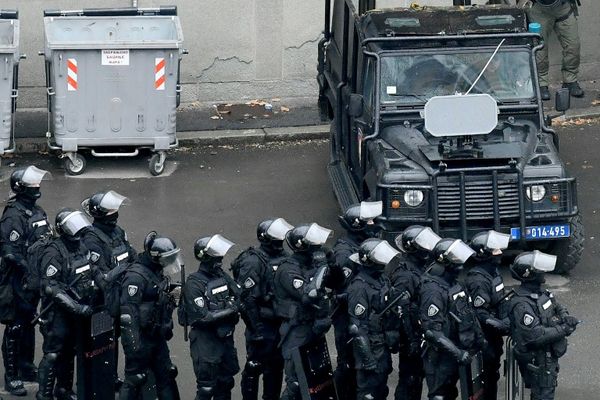
Netflix hit Adolescence has ignited conversations across the UK about contemporary masculinity, online radicalisation and violence against women and girls. It has also raised questions about the interventions needed at home, in schools and by the government to counter the seductive power of harmful content on social media.
The series suggests the key to solving some of these issues is parents and teachers understanding the “manosphere”. This is a collection of websites, influencers and communities where men talk about “men’s issues”. But, as I’ve explored in my research, anti-women and anti-feminist sentiment also prevails.
In an interview about the series, Adolescence writer Jack Thorne says:
Jamie is not a simple product of the ‘manosphere’. He is a product of parents that didn’t see, a school that couldn’t care and a brain that didn’t stop him. Put 3,000 kids in the same situation and they wouldn’t do what he did. Yet spend any time on forums on 4chan or Reddit, spend any time on most social media platforms and you end up, quite quickly, in some dark spaces. Parents can try to regulate this, schools can stop mobile phone access but more needs to be done.
Successive UK governments have attempted to counter online misogyny and violence against women and girls through legislation and public education schemes. But what would really work?
Adolescence attaches much importance to language and emojis used by teens to obscure meaning, though there is undoubtedly some creative license behind the depictions of the emojis used to mean “incel” (involuntary celibate).
But focusing on “slang parents and teachers need to know” is misguided. Every generation finds ways of talking about their lives in coded ways. And teen language is frequently tied to moral panics about what it potentially hides. Research has shown that regular, open and supportive conversations between parents and children are much more important.
The role of schools
The prime minister has suggested that Adolescence should be shown in schools. And Netflix has made the series available to secondary schools across the UK.
In December 2024, education minister Bridget Phillipson announced new teaching guidance about incel culture and online misogyny. She argued that it was “vital to recognise the signs of these dangerous ideas as early as possible”.
It’s encouraging to see the government take these issues seriously, but there are pitfalls. Teachers are under substantial pressure, struggling with workload and staffing. How many have the capacity to lead meaningful and supportive discussions, especially with limited training on these topics?
Some research suggests that female teachers encounter explicit misogyny in their classrooms. This makes it even more difficult to facilitate conversations about gender and violence. Sessions on countering misogyny also pose the danger of alienating boys, making them feel like they are being vilified for the actions of other men and boys.
Ultimately, interventions to reduce gender-based violence and misogyny need a “whole-school” approach that integrates gender equality across the curriculum, rather than isolating it within relationships, sex and health education (RSHE) classes. This content could also be covered in initial teacher training courses.
Researchers have developed resources to challenge dangerous gender norms for use in schools, community groups and other forums. These include toolkits from Dublin City University, University of Liverpool and the MascNet research network, which focus on improving critical thinking, unpacking dominant ideas of masculinity and reflecting on different ways of being a man.
My own work on A-level English curricula also offers suggestions. Improving digital literacy is key to helping young men identify the mechanisms of manipulation in the content they consume and resist the siren call of manosphere influences. This can encourage young men to rethink their assumptions about gender politics and masculinity, with the ultimate aim of reducing gender-based violence.
Other discussions have focused on recruiting more male teachers and the importance of models of masculinity based on caring, empathy and emotional vulnerability. Again, these are appealing solutions, but the evidence that male role models improve outcomes for young people is mixed.
Perhaps the trickiest debate concerns the regulation of media and technology. Adolescence writer Thorne has backed the UK following Australia’s approach to ban social media for under-16s, and some argue the government should ban smartphones for teenagers entirely. Experts say that such bans could do more harm than good.
The UK’s new online safety laws may go some way to holding social media companies to account for moderating illegal or harmful content and algorithms through fines. This covers intimate image abuse, cyberflashing and some other forms of online misogyny, but there are likely to be gaps when it comes to male supremacist and manosphere content.
And there are serious concerns about how the law will affect free speech and undermine privacy online.
Investing in youth
The problem with many of these strategies is that they fail to acknowledge the material reality of many young boys’ lives. There have been significant cuts over the past 20 years to youth provision, from clubs and community centres to mental health support.
Boys’ prospects in terms of educational attainment and secure employment lag behind girls’. These inequalities become even more pronounced across regions and social classes, and won’t be solved by banning social media.
Add to this disconnected communities and a potent combination of insecurity, precarity and frustrated expectation, it is no surprise that many young men find solace in an online world which gives them validation, belonging and a sense of community.
Thankfully, a number of organisations offer better solutions. Charities like Beyond Equality, the Manhood Academy, AndysManClub and Progressive Masculinity have provided outreach, mentoring and mental health provision for boys and young men across the UK for years.
Similarly, the S.M.I.L.E-ing Boys Project supports boys from black, Asian and minority ethnic communities to develop their emotional intelligence, with positive outcomes in terms of navigating relationships and interpersonal conflict. Government investment would help these organisations reach more young men, alongside improving access for underserved communities.
Adolescence has started some important conversations among parents, teens and politicians. But to make a difference in how young men navigate the world, how they deal with rejection, and how they negotiate the difficulties that life throws at them, these conversations need to be backed up with investment and concrete action.
Robert Lawson is a Research Fellow in the Institute for Research on Male Supremacism.
This article was originally published on The Conversation. Read the original article.







